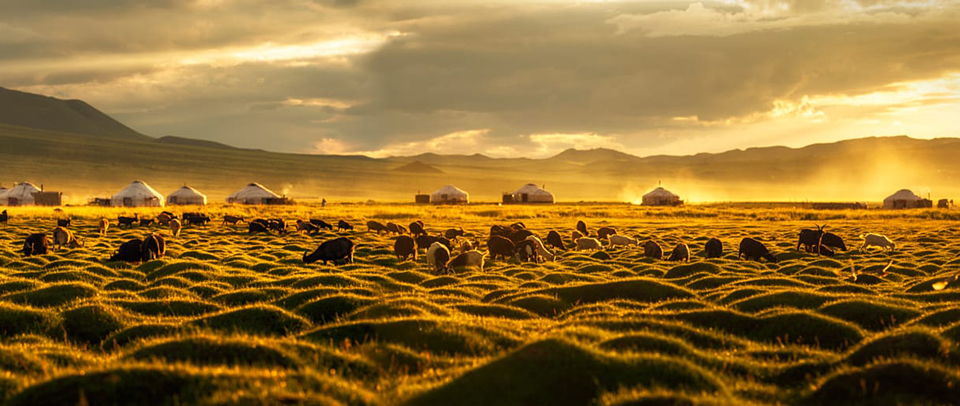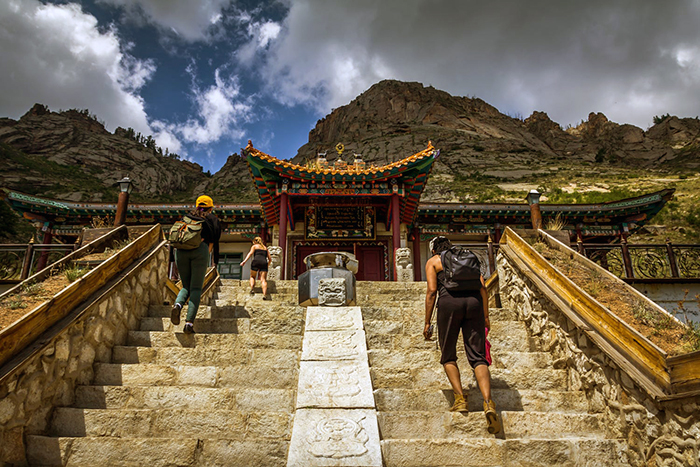GENERAL INFORMATION

Mongolia is a landlocked country of mountains, steppe and desert stretching over an area of 1,566,500 sq km / 604,830 sq miles. Territory Mongolia is the 18th largest in the world. It is bordered to the north by Russia, while China forms the border to the east, south and west. In the south the Gobi Desert covers more than a third of the country. Around 20% of the remainder is grassland steppe, and some 25%, principally the central, northern and western provinces, is classed as mountain forest steppe. Along the northern border is a large area of larch and pine forest which is essentially the southernmost reaches of Siberia.

Mongolian culture has many distinctive features. They are closely connected with the life style. From ancient times on, Mongolian have lived in the vast lands of Central Asia. Raising livestock and nomadic living patterns have found reflection in everyday thinking and the culture.
One of the unique features of nomadic culture is that Mongolian people live in full harmony with Mother Nature. In comparison with settled peoples, the nomadic herders face nature directly on a day in, day out basis.
Mongolian language belongs to the Altaic group of languages. There are many dialects in Mongolia but the Khalkha is the official one. The traditional Mongolian script is called Vaghintara and of Devanagiri origin that is written vertically.
From 1921 Mongolians were using Latin script until we adopted Cyrillic in 1945 due to the Russian influence. Since 1990, the traditional script reemerged and is taught in school.

Shamanism
is closely related to Mongolian nomadic culture. The tribes in Mongolia followed shamanism from the times of the Great Huns until the formation of the Uigur Empire.
Buddhism
introduced in Mongolian in the 16th century, played an enormous role in the development of Mongolian culture. The Mongolians' perceptions, psychology, traditions, thinking, and world outlook were enriched by the Buddhist philosophy and world view.
The basic monetary unit in Mongolia is TUGRUG. At the present, 20,000, 10,000, 5,000, 1,000, 500, 100, 50, 20, and 10 tugrug notes are in circulation. Commercial banks in Ulaanbaatar and province centers are the official organizations authorized to exchange foreign currency. They have network of branches in Ulaanbaatar and exchange bureaus at main hotels. ATM machine is available. As of 06 March 2017 currency rate is:
You can get visa from Mongolian consulate in your country. Our company will be providing you an invitation letter for your visa. Read more


You can come by either plane or train. There are a few places which fly to the capital, Ulaanbaatar. From Europe, there is an infrequent service from Istanbul (Turkish Airlines), Frankfurt (MIAT Mongolian Airlines) and Moscow (Aeroflot). There are almost daily flights from Seoul as well as other flights through Beijing.
The Trans-Mongolian Line of the Trans-Siberian Railway links Mongolia's capital Ulaanbaatar with Moscow and Beijing. The ride between Ulaanbaatar and Moscow will continue for 5 days. From Ulaanbaatar to Beijing the trip takes almost 2 days. Although the train is very promising for the tourists who want to discover the beauty of Mongolia, it might be a little tiring for the elders though.